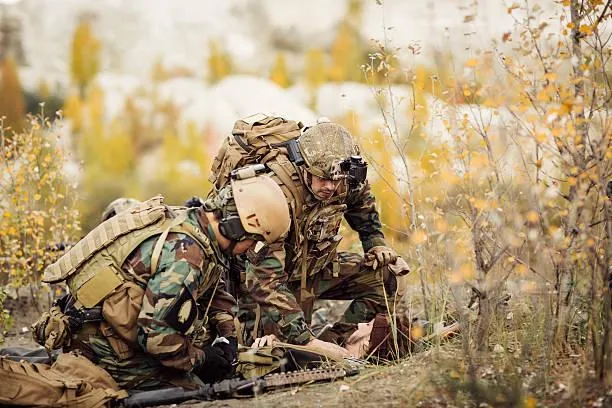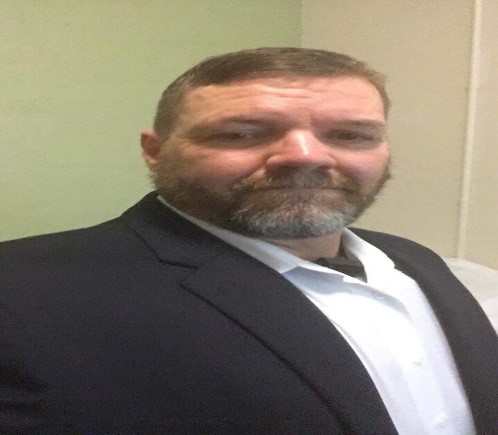
The Fatal Assumption the Scene is Safe: Why Emergency Responders Must Carry IFAKs for Themselves in Active Shooter Events
Welcome to the very first GAMS BLOG—brought to you by Goat-Trail Austere Medical Solutions. I’m Rory Hill, founder and president of GAMS. Whether you're military, law enforcement, EMS, Fire, or part of a public safety team, this space is for you.
We created this BLOG to challenge outdated concepts, share real-world insights, and build a community of forward-thinking professionals committed to improving tactical and austere medicine. Each episode will dive into the hard conversations, spotlight new frameworks like CSR—Chaos, Stabilization, Recovery—and showcase how programs like TAM-P are redefining what readiness looks like in today’s high-threat environments.
Thanks for joining us. Let’s get to work—Real-World Medicine for Real-World Situations.
Introduction: The Illusion of Safety
In the immediate aftermath of an active shooter event, the radio call “scene is safe” often provides a false sense of comfort. For many emergency responders, that phrase acts as a psychological switch—shifting them from threat posture to routine operations. But this mindset is not only flawed—it’s dangerous.
The hard truth is that active shooter environments remain fluid, unstable, and potentially lethal long after the initial threat is “neutralized.” Secondary shooters, improvised explosive devices, unsecured rooms, emotional civilians, or even re-engagements can instantly transform a seemingly stable scene back into a crisis. The only point at which a scene can genuinely be considered safe is after a full and methodical clearing operation has been completed by law enforcement—and even then, vigilance must remain high.
Compounding this danger is the fact that many emergency responders have little or no formal training in high-threat or tactical environments. They are trained to provide care, not to operate under fire or in chaotic, rapidly changing conditions. This gap in training creates a dangerous over-reliance on surface-level indicators of safety—like hearing “Hot Zone Secured” over the radio—without truly understanding the risks that persist in the Hot Zone.
As a result, responders continue to enter these unstable environments with a false sense of security and without their most critical piece of personal survival gear: an Individual First Aid Kit (IFAK) carried on their body. This oversight isn't just a policy failure—it's a potentially fatal error rooted in cultural complacency, lack of realistic training, and a dangerous misunderstanding of what “safe” really means in a dynamic threat environment.
Self-Preservation is the Mission
Let’s be clear—there’s no medicine in a gunfight. The mindset has to be one of self-preservation. Before every mission, I mentally rehearse one scenario above all others: What happens if I get shot?
I don’t wait for help. I:
Return fire.
Move to cover.
Announce I’ve been hit.
Administer self-aid if I’m able.
This isn’t theory—it’s preparation. I’ve told my teams for years, “Know your IFAK and every item in it. The life you save may be your own.”
In a high-threat environments, when everything goes sideways, your first line of defense isn’t a medic—it’s your training and your gear. And when stress floods your system, you won’t rise to the occasion—you’ll fall to your lowest level of training.
The IFAK Misconception: It’s Not for the Casualty—It’s for You
One of the most dangerous and persistent myths in responder culture is that the IFAK exists to treat others. That’s wrong.
Your IFAK is a personal trauma kit. Its sole purpose is to keep you, the responder, alive long enough to reach a higher level of care—or until a teammate can reach you and apply Buddy-Aid. It is not a community resource. It is not an optional item to leave in your vehicle. It is your lifeline in the worst moments imaginable.
In real-world incidents, the time between injury and death from hemorrhage or airway obstruction can be measured in minutes—sometimes seconds. Waiting for EMS or another provider is a gamble you can’t afford to take. You must be ready to:
Stop your own bleeding
Seal your own chest wound
Provide that Self-Aid as needed
And you must be able to do it while injured, under fire, in low light, and likely with only one functional hand.
The Dangerous Assumption: “Scene Is Safe”
Far too many responders—particularly from fire and EMS backgrounds—treat the declaration of a "safe" scene as a green light to relax situational awareness and abandon personal protective posture. As a result, many arrive without an IFAK on their person. This is a catastrophic failure in planning and mindset.
Active shooter environments are inherently unpredictable. Even after law enforcement declares a space “clear,” responders may still face:
Secondary threats or booby traps
Re-engagements by a determined shooter
Unsecured zones
Mass panic or hostile civilian interference
We’ve seen these dynamics play out tragically in events such as Sandy Hook, the Boston Marathon, and Uvalde—where the situation on the ground remained dangerous long after initial threat identification.
Declaring a scene “safe” does not make it so. Operating without an IFAK under these conditions is not just negligent—it’s potentially fatal.
Why Every Responder Must Carry an IFAK
An IFAK isn’t a luxury—it’s essential survival equipment. It’s your trauma care toolbox when help is minutes away and you’re bleeding now.
Standard IFAK components include:
Tourniquet
Hemostatic gauze
Chest seals
Pressure dressings
Airway adjuncts
Decompression needle
These are tools designed to manage the three preventable causes of death in tactical and austere environments: extremity hemorrhage, tension pneumothorax, and airway obstruction. But they’re only useful if they’re on your body, easily accessible, and part of your muscle memory.
If you’re wearing a vest and carrying a radio, your IFAK should be right there with you—not stowed in a jump bag or left in the rig.
Cultural Barrier: “I’ll Treat Others—Not Myself”
One of the most damaging cultural misconceptions is the belief that carrying an IFAK for yourself is paranoid or selfish. Responder culture emphasizes helping others, sometimes to the detriment of personal safety.
But let’s face facts: a responder who becomes a casualty becomes a liability. You tie up teammates, pull attention from mission objectives, and potentially make a bad situation worse.
Carrying your IFAK isn’t selfish—it’s professional. Your job is to stay in the fight, stay effective, and stay alive. If you can’t take care of yourself, you can’t help anyone else.
Field Lessons and Failures: What We’ve Seen
At Goat-Trail Austere Medical Solutions, we’ve conducted hundreds of training evolutions and reviewed dozens of after-action reports from active shooter incidents. The trend is clear and consistent: many responders arrive without their IFAKs or fail to use them effectively.
We’ve seen:
Tourniquets still in original packaging during live drills
IFAKs left in patrol cars while responders entered hot zones
Confusion under stress about how to use basic components like chest seals and gauze
If you are trained to wear body armor, you should be trained to use an IFAK. And it should be treated with the same level of priority and care.
Solutions: Change the Mindset, Change the Outcome
To fix this, we must address both the mindset and the operational protocols that govern responder safety.
Wear It or Don’t Deploy
If you wouldn’t go into the field without your vest or radio, you shouldn’t go without your IFAK.Train for Self-Aid Under Stress
Tourniquet drills, wound packing, chest seal application—all of it should be trained in the dark, with gloves, under time pressure. Make it second nature.Make IFAKs a Standard Uniform Item
Mount them on the body—preferably front-facing and accessible with either hand. Leadership must lead by example.Revise SOPs and Briefings
Stop treating "scene safe" as a trigger to downshift. Build briefings that reinforce the continuing risk and mandate personal medical readiness.Issue IFAKs as Standard Gear
Many departments skip IFAK issuance, assuming responders already carry medical supplies or citing budget constraints. This logic is dangerously flawed. The cost of one responder fatality far exceeds the price of an IFAK.
Conclusion: You Are Your Own First Patient
The belief that a scene is truly safe, or that someone else will treat you, has no place in modern response culture. These assumptions are costing lives.
In high-threat, high-stakes environments, personal survival is the foundation of professional performance. You are not expendable. You are essential. And your IFAK is not just a pouch of gear—it is your last line of defense.
Wear it. Know it. Use it. The life you save may be your own.
Subscribe to our free newsletter for field-tested strategies, gear insights, and the latest posts in our “From Chaos to Structure” series. Learn how GAMS is changing the way responders train, think, and survive.
Visit: www.goat-trailams.com
#IFAK #ResponderSurvival #TacticalMedicine #TrainToLive #FirstOnScene #SelfAidBuddyAid #GAMS #YouAreYourOwnFirstPatient
